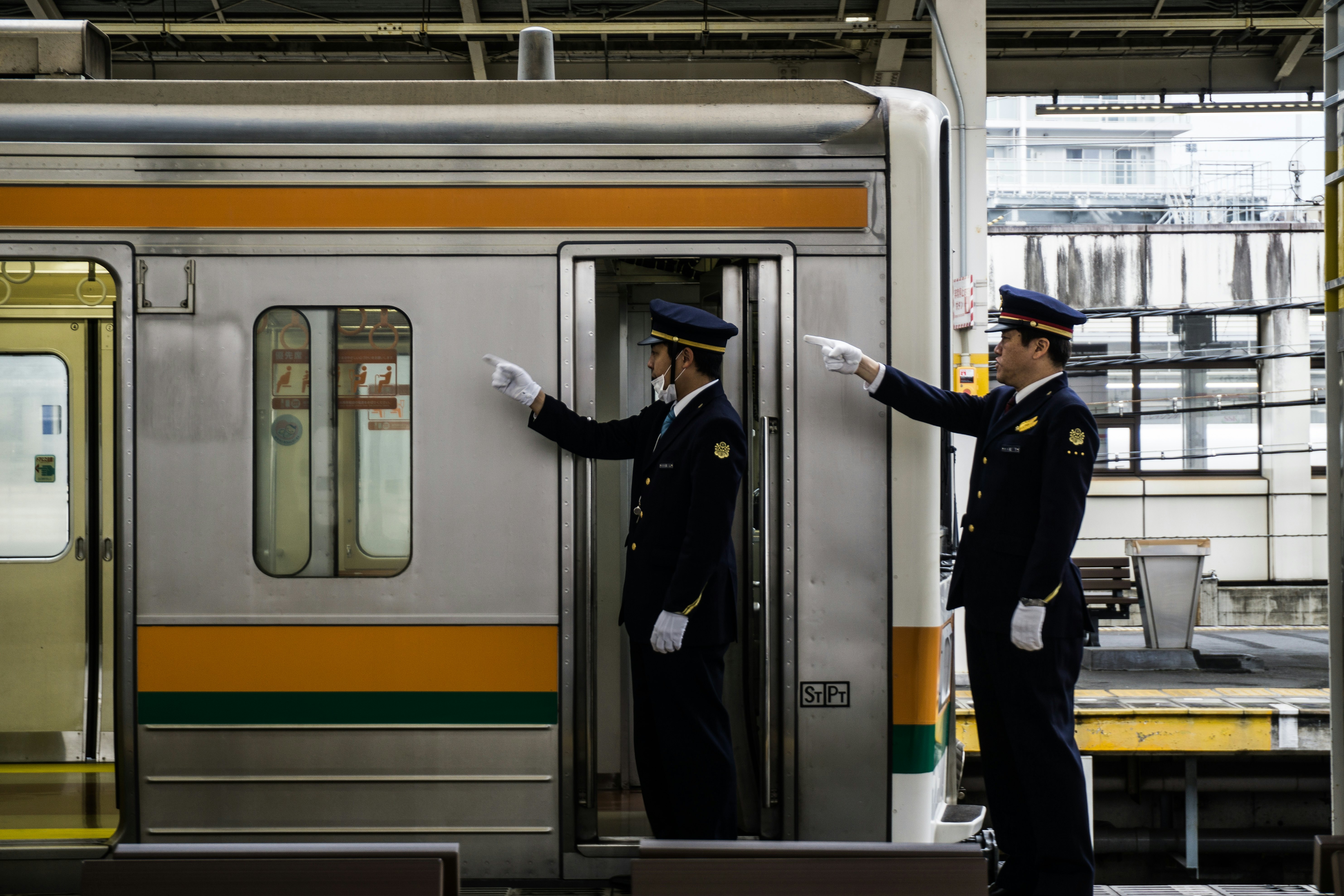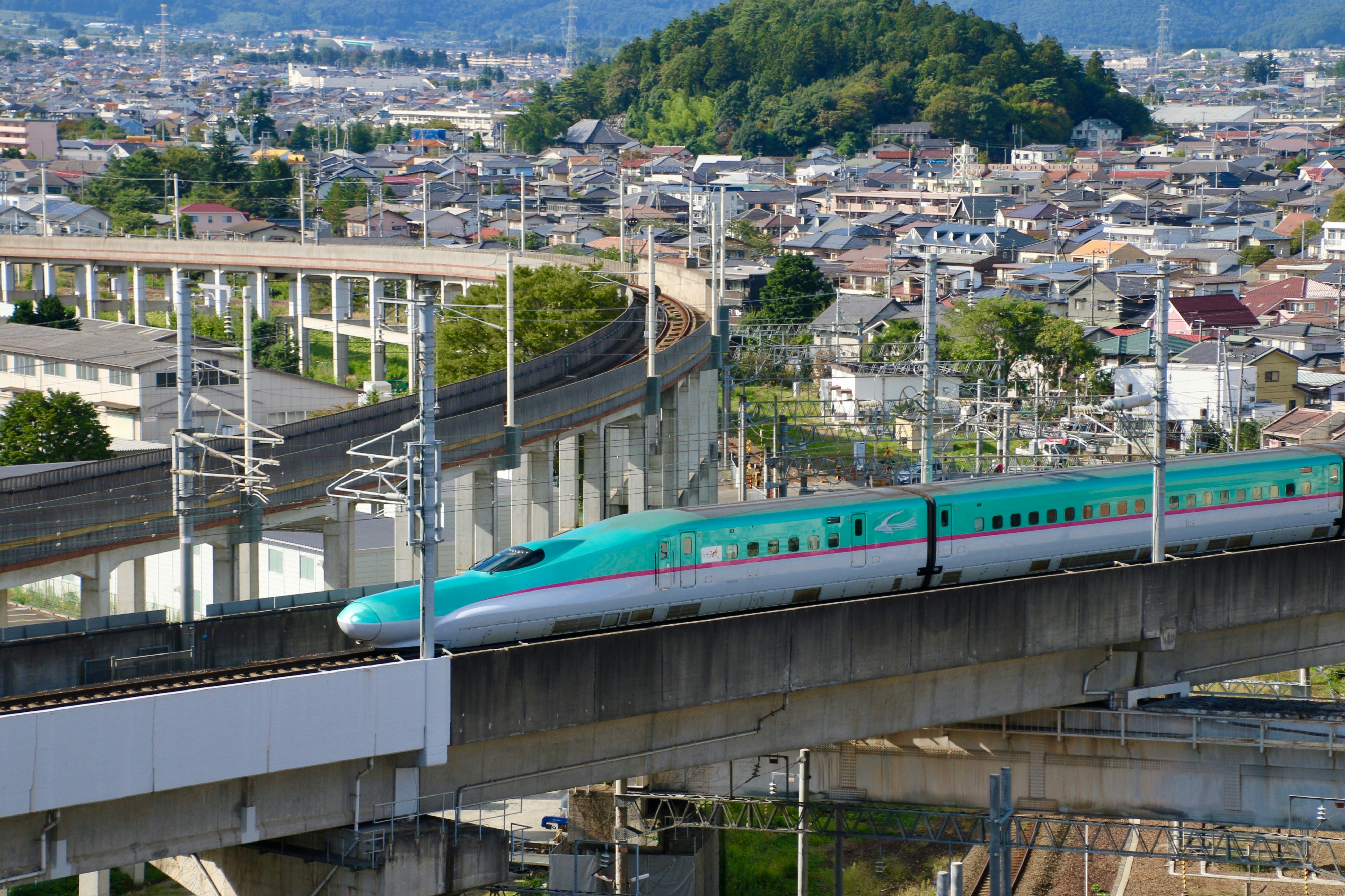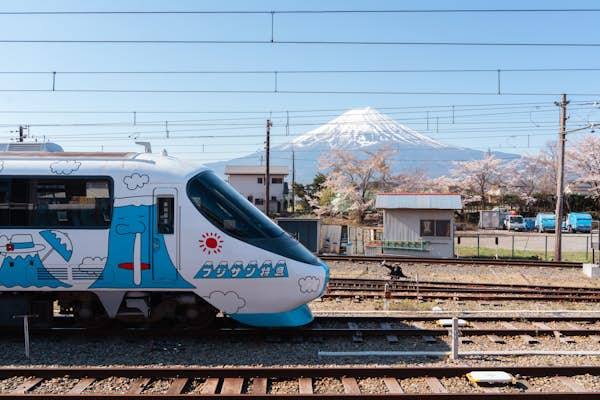The Japan Rail Pass is more expensive than it used to be, so is it still a good deal for travellers? We asked our resident Japan train expert, John Walton, freshly returned from a two-week, 48-train trip exploring Japan’s snow country and the beginning of the ume plum blossom season.
If you’re planning to travel long distances in Japan, enjoy rail travel, and really want to explore the parts of the country that most visitors won’t see, the Japan Rail Pass is still one of the most incredible deals in travel, even with the recent price increases.
Since 2020, the Japan Rail Pass is now the same size as a normal ticket, printed on the iconic greeny-blue, celadon-colored Japan Rail (JR) ticket paper, and you can use it in the automatic gates like a normal ticket. You can also now use it in the automatic ticket reservation machines at many larger stations, which is a big step forward. Even at present prices, it’s still a great way to enjoy train travel in Japan.
Advertisement
Whether you plan to zip around Japan by Shinkansen or take slower local trains to soak up the scenery, here’s what you need to know about the Japan Rail Pass.

Where can I get a Japan Rail Pass?
One of the most welcome changes is that tourists can now buy a Japan Rail Pass directly online, rather than relying on the old “exchange order” system, where tourists had to pay a travel agent for a paper voucher before departing from home, and then swap this exchange order for a rail pass at a major station or airport on arrival in Japan.
It is still possible to use the old exchange order system if you want to, but it’s much more convenient to simply buy the pass directly online, using a credit card, via the official Japan Rail Pass Reservation system. Simply give your reference number to a station staff member once you reach Japan to obtain the physical pass.
This avoids the risk of losing your paper exchange order voucher, and it will also save you the cost of the commission (or the unfavorable currency exchange rate used by the travel agent), as well as letting you use Japan Rail’s very helpful online ticket reservation system.
When should I buy a Japan Rail Pass?
You can buy the pass up to one month before you arrive in Japan, which is the same as the time window for making advance train reservations. You’ll want to reserve seats ahead for popular routes such as the Tokyo–Kyoto–Hiroshima–Tokyo circuit.
What trains does it cover?
As before the price rise, the Japan Rail pass covers unlimited rides on JR trains during the period of validity. This includes Shinkansen, limited express, rapid and local trains, and the monorail connecting Haneda Airport to Tokyo, plus the JR Ferry to Miyajima and some non-JR trains that connect to isolated JR lines, as well as JR-operated buses. Note that surcharges apply for travel on the superfast Nozomi and Mizuho services.

Is the Japan Rail Pass expensive?
As of 2023, the seven-day “ordinary car” pass is now 50,000 yen (about US$335, or US$48 per day), while the Green Car (Business Class) option is 70,000 yen (about US$470, or US$67 per day). There are also 14-day and 21-day versions, but even as a major fan of Japan’s trains, I think these are unlikely to make financial sense for most travelers.
This represents an increase of around 65% on the pre-2023 prices, but the pass can still save you money on rail fares if you plan to travel extensively around the country by train.
Will I get my money’s worth?
You should primarily think about the Japan Rail Pass from a financial perspective, considering whether it would be cheaper to just buy normal train tickets from a ticket office for the route you plan to follow. However, it’s also worth factoring in the additional flexibility, and the special features (and restrictions) of the pass.
Advertisement
To give you a rough idea, the break-even point for the Japan Rail Pass comes at around the distance of the Tokyo-Kyoto-Hiroshima-Tokyo loop if you travel by Shinkansen. If you plan to travel further than that, the pass will likely offer savings over buying tickets individually.

What does that look like on a daily basis?
To dive deeper, think about your daily train travel for the days that the pass is valid. Will you be using more than 7200 yen (US$50) worth of JR train tickets for every day of the pass, or 10,000 yen (US$69) for the Green Car pass?
Map out your travel plans and use a journey planner such as Jorudan’s Japan Transit Planner or Navitime’s Japan Route Finder & Planner to help tot up your train trips and costs. To get you started, here are a few examples of one-way reserved seat prices, traveling in the ordinary car on the Shinkansen.
-
Tokyo-Kyoto: 13,650 yen (US$94)
-
Kyoto-Hiroshima: 11,740 yen (US$81)
-
Tokyo-Sendai: 11,410 yen (US$79)
-
Tokyo-Sapporo: 29,680 yen (US$205)
-
Tokyo-Kanazawa: 14,380 yen (US$99)
-
Kanazawa-Kyoto: 7720 yen (US$53)
Also consider if you’ll be taking any rides on the cheaper (and often scenic) Limited Express and special sightseeing trains. Here are sample prices for some of my favourite scenic Limited Express and excursion trains.
-
Nagoya to Toyama on the Hida: 7590 yen (US$52)
-
Akita to Niigata on the Inaho: 7350 yen (US$51)
-
Okayama to Matsue on the Yakumo: 5940 yen (US$41)
-
Osaka to Kinosaki-onsen on the Kounotori: 5940 yen (US$41)
-
Aomori to Akita on the Resort Shirakami: 5350 yen (US$37)
As you’ll see, so long as you plan to travel by train most days, it’s very easy to get your money’s worth if you travel on the Shinkansen, and not too hard if you’re using Limited Express trains.

What are the features and restrictions of the pass?
One massive advantage of the Japan Rail Pass is that it is incredibly flexible. There’s no fee to make reservations, and you can change them without penalty — even if you’ve already missed your train. Just head to the nearest “green window” ticket office or a JR Service Center and show them the details of your old reservation to exchange for a new booking, with no fees to pay.
Another big plus is that you can reserve trains online from home (or even in Japan) using the official Japan Rail Pass Reservation system, which is available in English and several other languages. As a bonus, its journey planning system will only show you trains you can actually use — not the Nozomi or Mizuho trains you can’t use.
Having made a booking, you can collect your reserved tickets (small green-blue paper tickets about the size of a credit card) from any ticket office.
Make sure you are clear on which trains are and aren’t included in the pass. If you plan to use the Nozomi and Mizuho trains for travel west of Tokyo, you’ll need to pay a surcharge of 4860 yen (US$33.50) for travel from Tokyo to Kyoto, and 6500 yen (US$45) for travel from Tokyo to Hiroshima.
This isn’t a great deal, compared to the normal Hikari or Sakura services on the Shinkensen. Trains use exactly the same carriages, on the same tracks, at the same top speed, but the Nozomi and Mizuho make fewer stops and so are a little faster.

How do I get the most out of the Japan Rail Pass?
The key to getting great value from the pass is understanding how comfortably and swiftly you can cover entire regions of Japan thanks to the Shinkansen. These ultra-fast trains will significantly increase the area you can cover, even on a short trip.
Imagine traveling beyond major cities to soak up samurai history in the village of Kakunodate, marvel at the Nebuta Festival museum in Aomori, or soak in the onsens (hot spring baths) at Kinosaki or Beppu. Or picture yourself in the historic city of Sendai, overlooking gorgeous Matsushima Bay, zipping between the twelve ancient castles of Japan, or visiting the nation’s three great gardens at Okayama, Kanazawa and Mito.
Don’t overlook the scenery en route. Watching the landscape whizz by may be thrilling from a Shinkansen train at 320km/h (200 mph), but you may get a better view from a more sedate Limited Express inter-regional train.
Don’t plan to use the Japan Rail Pass for the time you’re going to spend touring temples and gardens in big cities such as Kyoto or Tokyo, where you may stop for several days. Using a day of valuable Japan Rail Pass unlimited travel for local and short-distance trains – like the Local, Rapid, commuter and urban JR services in Tokyo – is unlikely to be a good deal. Local train prices are often very low – just 210 yen (US$1.44) from Tokyo Station to Shibuya, for example.
Any personal tips?
For my Japan trips, I aim to use the Japan Rail Pass to travel long distances during the seven-day validity period, visiting many different places. Then, once it finishes, I settle in and spend several days in the same place – often Kyoto, but sometimes a quiet onsen town or a fun, medium-sized city such as Nagoya or Sendai.
Assuming you’re flying into Tokyo, you could spend an incredible week going north from Tokyo and exploring the beautiful Tohoku region, then traveling down the more remote Sea of Japan side of the country to Nagano.
From here, you could head west, skipping past Kyoto for now, to Himeji, Hiroshima, and the island of Kyushu. Return to Kyoto on the last day of your rail pass for several days exploring its historic temples, before returning to Tokyo or detouring to Kanazawa, Nagoya, and other places on the way back to the capital.

